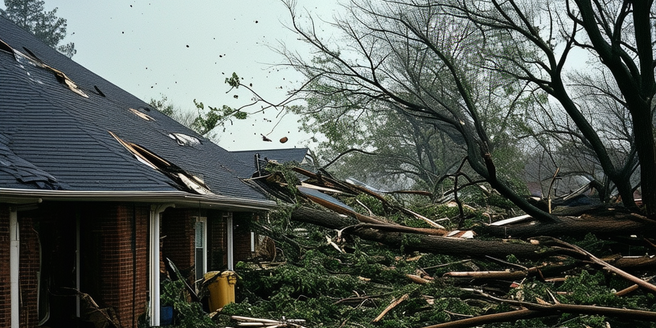
Understanding Windstorm Risks
Windstorms pose significant threats to both property and personal safety. Various factors such as geographical location, weather patterns, and climate change can influence the severity and frequency of windstorms. Understanding these risks is the first step in effective disaster preparedness. Installing storm-resistant features on buildings is a proactive measure that can minimize damage. By staying informed about the latest meteorological forecasts and assessing historical storm data, homeowners can better anticipate potential windstorm impacts. Additionally, recognizing the warning signs and knowing the typical wind speeds associated with different storm categories can aid in making timely decisions to protect one’s home and family. Regularly updating knowledge on windstorm risks ensures preparedness and reduces the likelihood of severe damage.
Assessing Your Property’s Vulnerabilities
Conducting a thorough assessment of your property’s vulnerabilities can significantly mitigate windstorm damage. Start by identifying weak points, such as old or damaged roofing, outdated windows, or loose exterior elements. Pay special attention to structures like garages and carports that might not be securely anchored. It’s crucial to address these vulnerabilities before they escalate into serious issues. Consulting with a professional can provide additional insights for safeguarding your property. An assessment should also consider surrounding features like trees and power lines that could potentially cause harm during high winds. Knowing these vulnerabilities enables homeowners to prioritize reinforcements or upgrades, reducing the risk of damage. Regular inspections and maintenance can prevent minor weaknesses from becoming major liabilities during a storm.
Structural Reinforcements and Upgrades
Implementing structural reinforcements is crucial in minimizing windstorm damage. Begin by ensuring your roof is well-maintained with secure shingles or tiles and, if necessary, reinforce it using straps and clips. Consider installing impact-resistant windows and doors that can better withstand high winds and flying debris. Regular inspections by a professional can help identify vulnerable areas in need of attention. Garage doors, often overlooked, should be fortified to prevent wind entry which can cause structural failure. Retrofitting involves making modifications, such as adding roof-to-wall connections or upgrading to a more secure garage door, which can significantly enhance a home’s resilience. Investing in these reinforcements not only boosts safety but also potentially increases the property’s value.
Emergency Preparedness and Planning
Effective emergency preparedness is vital in mitigating the effects of windstorms. Start by crafting a well-thought-out emergency plan, detailing evacuation routes and safe meeting points. It is also important to identify a shelter in place location if evacuation is not possible. Assemble an emergency kit containing essentials such as water, non-perishable food, first-aid supplies, flashlights, and batteries. Don’t forget to include important documents and contact information in your emergency kit. Regularly review and update the plan with your family, ensuring everyone knows their role in an emergency situation. Staying informed with up-to-date alerts and warnings from reliable sources enables timely decision-making. Practicing drills and familiarizing everyone with emergency procedures can reduce panic and ensure a swift response when a windstorm strikes.
Insurance Considerations and Benefits
Understanding your insurance policy and its coverage limits is essential in managing windstorm risks. Review your homeowner’s insurance to ensure it encompasses windstorm-related damages, such as structural damage or loss of personal belongings. Consider consulting with an insurance agent to clarify any ambiguities in your current policy. Some regions prone to severe weather might require additional windstorm insurance or endorsements. It’s crucial to document all property features and valuables accurately, maintaining an up-to-date inventory to streamline any future claims. Taking measures to reinforce your property can potentially lower insurance premiums, making it a worthwhile investment. Furthermore, staying informed about local weather patterns can help you anticipate and prepare for potential risks. Adequate coverage ensures financial compensation in the aftermath, providing peace of mind amidst nature’s unpredictability.
